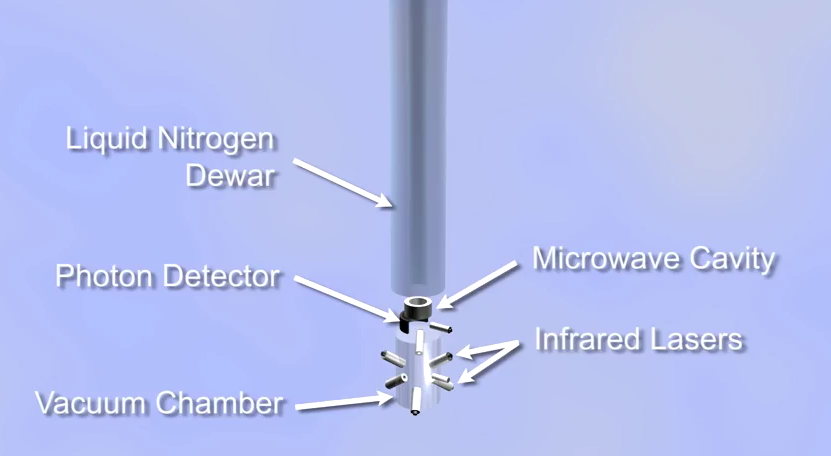If you’re someone who is happy to spend an hour setting the clock on the microwave because it has to be just right, then the news out of the US Department of Commerce's National Institute of Standards and Technology (NIST) is right up your alley. NIST has announced the launch of a new atomic clock as the official standard for civilian time. Called NIST-F2, it is so accurate that it will lose only one second in 300 million years.
The announcement follows on the recent official release of performance data for the NIST-F2 to the International Bureau of Weights and Measures (BIPM), outside Paris, which uses the data from atomic clocks to generate the international time standard Coordinated Universal Time (UTC). Under development for over ten years, the NIST-F2 is three times as accurate and the NIST-F1 it replaces, which has defined the standard of timekeeping since 1999.
The F2, like the F1, is a “fountain clock” and the latest development of the cesium atomic clocks first used by the NIST in the 1950s. NIST has made a number of modifications to the F2, but the main way in which it differs from the F1 is in terms of temperature. The F1 works at 27 ºC (80 ºF), while the F2 operates at a much colder one, minus 193 ºC (minus 316 ºF). This lowers the background radiation that the machine has to contend with and because colder atoms move much slower, longer measurements can be taken.

The clock consists of a tubular vacuum chamber at the bottom of which are six infrared lasers and a ring-shaped chamber filled with microwaves produced by a maser. Cesium atoms are injected into the chamber and the lasers corral about 10 million of them into a ball and chill them to nearly absolute zero. Then two vertical lasers push the ball of cesium atoms up the tube before allowing it to drop down again, thousands of time each hour. This up and down motion is the basis for the name of the system.
As the ball bounces up and down, it passes through the microwaves and some of the cesium atoms become excited. When another laser hits them, they give off light, which can be measured as the frequency is adjusted. The frequency at which most of the atoms become excited and thus give off the most light is the natural resonance frequency of the cesium atom, or 9,192,631,770 Hz. So, the scientist measure the light coming off the ball of atoms, and when it reaches a peak, that’s when the natural resonance frequency is struck.
What this has to do with time is that 9,192,631,770 Hz is the international definition of a second. In other words, all the scientists have to do is get the cesium atoms to vibrate 9,192,631,770 times, and you've got your second.
This means that the F2 isn't a clock in the sense that it marks time; it defines what time is by defining how long a second is. Because of this, though it is possible to make more precise clocks, by definition they can’t be more accurate until a new standard it set.

All this may seem esoteric, but modern technological society is dependent on atomic clocks. Clocks that can operate with extreme accuracy and precision are used to keep mobile phones, GPS, power grids, digital television, and the internet working. It’s also used for radio astronomy, timestamps for financial transactions, and sets the standard for systems that automatically set the time for billions of clocks and computers each day, either directly or indirectly by radio broadcasts and the internet.
However, the F2 doesn't run these itself – in fact it only runs a few weeks a year. Its job is to act as the standard against which to set less accurate, but more durable atomic clocks to make sure they remain in synch with universal time.
The NIST point out that the commercial clocks that the NIST-F2 sets the standards for are as accurate as the best NIST clocks of 20 years ago, and the the technology inspires new technology as the clock improves. "If we've learned anything in the last 60 years of building atomic clocks, we've learned that every time we build a better clock, somebody comes up with a use for it that you couldn't have foreseen," says NIST physicist Steven Jefferts, lead designer of NIST-F2.
NIST plans to simultaneously operate both NIST-F1 and NIST-F2. Meanwhile, the US Naval observatory will continue to provide the time standard for the military. NIST also foresees the day when the limitations of the cesium clock will be reached and replaced by more advanced optical atomic clocks operating on higher frequencies that could be 100 times more accurate that the F2 as a new standard second is defined to match them.
The video below describes the NIST-F2 and how it works.
Source: NIST







